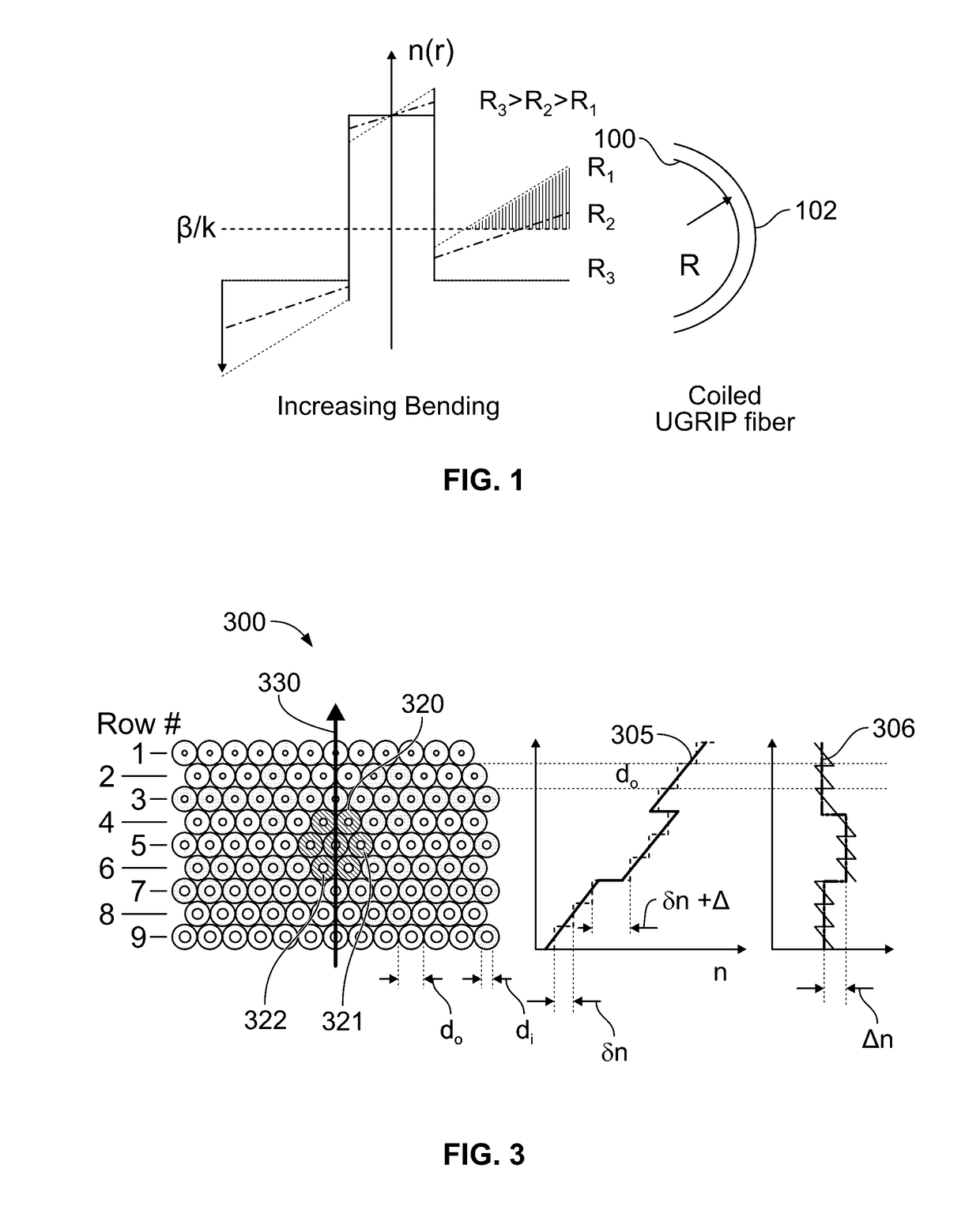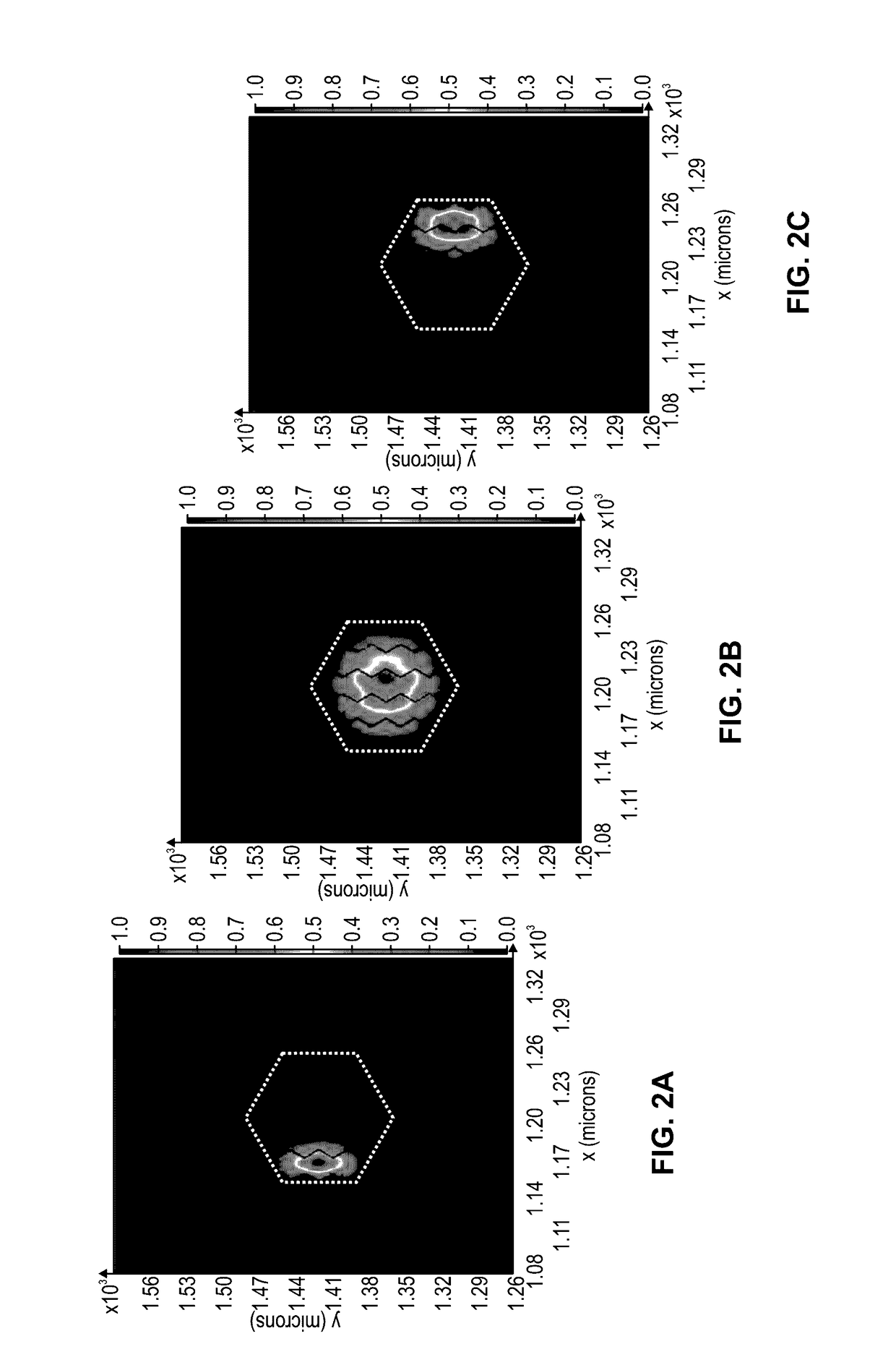Method of fabrication of low-bend-loss single mode fibers of very large mode areas
a single-mode fiber and large-area technology, applied in the field of fabrication of single-mode fibers of very large-area mode areas, can solve the problems of low value of mode area when bent, poor maintenance of large-area mode areas, thermal and optical damage, etc., and achieves large-area mode, reduces mode loss and modal deformation, and robust single-modedness.
- Summary
- Abstract
- Description
- Claims
- Application Information
AI Technical Summary
Benefits of technology
Problems solved by technology
Method used
Image
Examples
Embodiment Construction
[0038]Detailed embodiments of the present invention are disclosed herein; however, it is to be understood that the disclosed embodiments are merely exemplary of the invention, which may be embodied in various forms. Therefore, specific structural and functional details disclosed herein are not to be interpreted as limiting, but merely as a representative basis for teaching one skilled in the art to variously employ the present invention in virtually any appropriately detailed method, structure or system. Further, the terms and phrases used herein are not intended to be limiting, but rather to provide an understandable description of the invention.
[0039]Optical fiber bend loss is related to the radius of curvature R of a typical step index fiber. When the actual radius of curvature approaches a critical value Rc, the bend loss increases sharply from negligible values to intolerably large values, implying very large bend losses when fibers with Aeff>1000 μm2 are not kept straight. An ...
PUM
| Property | Measurement | Unit |
|---|---|---|
| mode area | aaaaa | aaaaa |
| mode field diameters | aaaaa | aaaaa |
| mode field diameters | aaaaa | aaaaa |
Abstract
Description
Claims
Application Information
 Login to View More
Login to View More - R&D
- Intellectual Property
- Life Sciences
- Materials
- Tech Scout
- Unparalleled Data Quality
- Higher Quality Content
- 60% Fewer Hallucinations
Browse by: Latest US Patents, China's latest patents, Technical Efficacy Thesaurus, Application Domain, Technology Topic, Popular Technical Reports.
© 2025 PatSnap. All rights reserved.Legal|Privacy policy|Modern Slavery Act Transparency Statement|Sitemap|About US| Contact US: help@patsnap.com



